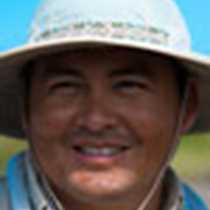Genovesa Island
Red-footed boobies and frigatebirds welcomed us while the National Geographic Endeavour entered into a wide, ancient caldera at Genovesa Island. They came to the ship to rest on its rails in front of the bridge; they were interested in us as much as we were curious about their enigmatic natural life at sea. Genovesa, also known as Bird Island, is an ancient shield volcano located in the northeastern side of the Galápagos Archipelago. Due to its isolation and distance from any of the central islands, Genovesa is one of the most beautiful and unique islands, thanks to its great amount of seabirds.
Due to the lack of predators, such as the Galápagos hawk, our morning outing was amazing. We began with a wet landing on a white-sand beach at Darwin Bay while in the distance we sighted swallow-tailed gulls collecting small pebbles to construct their nests and camouflage their eggs from any possible small predator found in this irreplaceable and stunning place. Flocks of red-footed boobies and frigatebirds were hovering above us while others sat on unstable platforms waiting to be selected by females.
Along the beach sea lions and shorebirds were entertaining us with their playful behavior. The unforgettable morning walk continued along the beach when some of the frigates trying to steal the nests of other birds captured our attention. Afterwards, some guests decided to go to explore the underwater realm, while others enjoyed a close encounter with the wonders of Genovesa from kayaks, and some spent the rest of the morning at the beach.
After a great meal to recover our energies, we were off again, this time to Prince Philip’s Steps, which is an extraordinary steep path that leads to a seabird colony. As we walked through a Palo Santo forest, Nazca boobies, mockingbirds, Galápagos doves and Darwin’s finches delighted us with their sounds. The path took us to the southeastern coast areas where we found ourselves surrounded by a great old rocky plain burnished and oxidized by erosion. Storm petrels here were extremely abundant and we were astonished by their bizarre behavior, since storm petrels here are different from any others in the world. Because they fly during daytime to avoid predators they only return to their nest holes at night. The perfect camouflage of the short-eared owl, which its plumage blended perfectly with the brown rocks, surprised many petrels that landed on the field.
An unforgettable day ended with a bizarre sunset that illuminated the rim of Genovesa Island.




